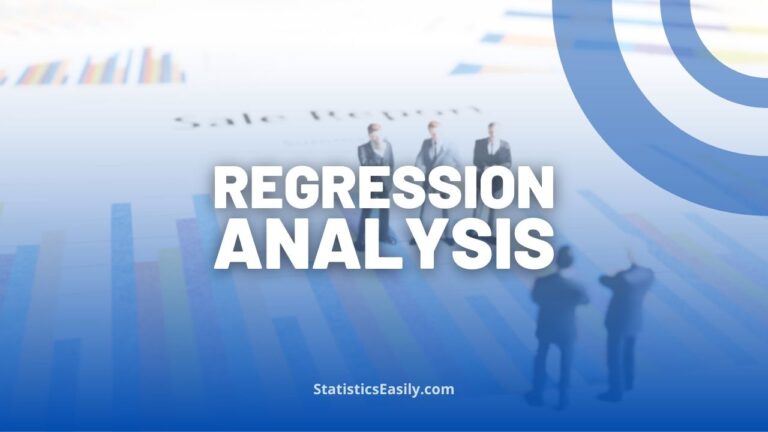How to Report Results of Multiple Linear Regression in APA Style
You will learn How to Report Results of Multiple Linear Regression, accurately reporting coefficients, significance levels, and assumptions using APA style.
Introduction
Multiple linear regression is a fundamental statistical method to understand the relationship between one dependent variable and two or more independent variables. This approach allows researchers and analysts to predict the dependent variable’s outcome based on the independent variables’ values, providing insights into complex relationships within data sets. The power of multiple linear regression lies in its ability to control for various confounding factors simultaneously, making it an invaluable tool in fields ranging from social sciences to finance and health sciences.
Reporting the results of multiple linear regression analyses requires precision and adherence to established guidelines, such as those provided by the American Psychological Association (APA) style. The importance of reporting in APA style cannot be overstated, as it ensures clarity, uniformity, and comprehensiveness in research documentation. Proper reporting includes:
- Detailed information about the regression model used.
- The significance of the predictors.
- The fit of the model.
- Any assumptions or conditions that were tested.
Adhering to APA style enhances the readability and credibility of research findings, facilitating their interpretation and application by a broad audience.
This guide will equip you with the knowledge and skills to effectively report multiple linear regression results in APA style, ensuring your research communicates scientific inquiries.
Highlights
- Detail assumptions check like multicollinearity with VIF scores.
- Report the adjusted R-squared to express model fit.
- Identify significant predictors with t-values and p-values in your regression model.
- Include confidence intervals for a comprehensive understanding of predictor estimates.
- Explain model diagnostics with residual plots for validity.
Ad Title
Ad description. Lorem ipsum dolor sit amet, consectetur adipiscing elit.
Step-by-Step Guide with Examples
1. Objective of Regression Analysis
Initiate by clearly stating the purpose of your multiple linear regression (MLR) analysis. For example, you might explore how environmental factors (X1, X2, X3) predict plant growth (Y). Example: “This study aims to assess the impact of sunlight exposure (X1), water availability (X2), and soil quality (X3) on plant growth rate (Y).”
2. Sample Size and Power
Discuss the significance of your sample size. A larger sample provides greater power for a robust MLR analysis. Example: “With a sample size of 200 plants, we ensure sufficient power to detect significant predictors of growth, minimizing type II errors.”
*Considering the importance of the power of the statistical test, calculating the sample size is a crucial step for accurately determining the adequate sample size needed to identify the estimated relationship.
3. Checking and Reporting Model Assumptions
- Linearity: Verify each independent variable’s relationship with the dependent variable is linear. Example: “Scatterplots of sunlight exposure, water availability, and soil quality against plant growth revealed linear trends.”
- Normality of Residuals: Assess using the Shapiro-Wilk test. Example: “The Shapiro-Wilk test confirmed the residuals’ normality, W = .98, p = .15.”
- Homoscedasticity: Evaluate with the Breusch-Pagan test. Example: “Homoscedasticity was confirmed, with a Breusch-Pagan test result of χ² = 5.42, p = 0.14.”
- Independence of Errors: Use the Durbin-Watson statistic. Example: “The Durbin-Watson statistic of 1.92 suggests no autocorrelation, indicating independent errors.”
4. Statistical Significance of the Regression Model
Present the F-statistic, degrees of freedom, and its significance (p-value) to demonstrate the model’s overall fit. Example: “The model was significant, F(3,196) = 12.57, p < 0.001, indicating at least one predictor significantly affects plant growth.”
5. Coefficient of Determination
Report the adjusted R² to show the variance explained by the model. Example: “The model explains 62% of the variance in plant growth, with an adjusted R² of 0.62.”
6. Statistical Significance of Predictors
Detail each predictor’s significance through t-tests. Example: “Sunlight exposure was a significant predictor, t(196) = 5.33, p < 0.001, indicating a positive effect on plant growth.”
7. Regression Coefficients and Equation
Provide the regression equation with unstandardized coefficients. Example: “The regression equation was Y = 2.5 + 0.8X1 + 0.5X2 – 0.2X3, where each hour of sunlight (X1) increases growth by 0.8 units…”
8. Discussion of Model Fit and Limitations
Reflect on how well the model fits the data and its limitations. Example: “While the model fits well (Adjusted R² = 0.62), it’s crucial to note that it does not prove causation, and external factors not included in the model may also affect plant growth.”
9. Additional Diagnostics and Visualizations
Incorporate diagnostics like VIF for multicollinearity and visual aids. Example: “VIF scores were below 5 for all predictors, indicating no multicollinearity concern. Residual plots showed random dispersion, affirming model assumptions.”
Ad Title
Ad description. Lorem ipsum dolor sit amet, consectetur adipiscing elit.
Example
“In our exploration of the determinants of final exam scores in a university setting, we employed a multiple linear regression model to assess the contributions of study hours (X1), class attendance (X2), and student motivation (X3). The model, specified as Y = β0 + β1X1 + β2X2 + β3X3 + ε, where Y represents final exam scores, aimed to provide a comprehensive understanding of how these variables collectively influence academic performance.
Assumptions Check: Before examining the predictive power of our model, a thorough assessment of its foundational assumptions was undertaken to affirm the integrity of our analysis. Scatterplot examinations scrutinized each predictor’s relationship with the dependent variable for linearity, revealing no deviations from linear expectations. The Shapiro-Wilk test substantiated the normality of the residuals (W = .98, p = .15), thereby satisfying the normality criterion. Homoscedasticity, the uniform variance of residuals across the range of predicted values, was confirmed via the Breusch-Pagan test (χ² = 5.42, p = 0.14). Furthermore, the Durbin-Watson statistic stood at 1.92, effectively ruling out autocorrelation among residuals and attesting to the independence of errors. The Variance Inflation Factor (VIF) for each predictor was well below the threshold of 5, dispelling multicollinearity concerns. Collectively, these diagnostic tests validated the key assumptions underpinning our multiple linear regression model, providing a solid groundwork for the subsequent analysis.
Model Summary: The overall fit of the model was statistically significant, as indicated by an F-statistic of 53.24 with a p-value less than .001 (F(3,196) = 53.24, p < .001), suggesting that the model explains a significant portion of the variance in exam scores. The adjusted R² value of .43 further illustrates that our model can account for approximately 43% of the final exam scores variability, highlighting the included predictors’ substantial impact.
Coefficients and Confidence Intervals:
- The intercept, β0, was estimated at 50 points, implying an average exam score baseline when all independent variables are held at zero.
- Study Hours (X1): Each additional hour of study was associated with a 2.5 point increase in exam scores (β1 = 2.5), with a 95% confidence interval of [1.9, 3.1], underscoring the value of dedicated study time.
- Class Attendance (X2): Regular attendance contributed an additional 1.8 points to exam scores per class attended (β2 = 1.8), with the confidence interval ranging from 1.1 to 2.5, reinforcing the importance of class participation.
- Student Motivation (X3): Motivation emerged as a significant factor, with a 3.2-point increase in scores for heightened motivation levels (β3 = 3.2) and a confidence interval of [2.4, 4.0], suggesting a profound influence on academic success.
Model Diagnostics: The diagnostic checks, including the analysis of residuals, confirmed the model’s adherence to the assumptions of linear regression. The absence of discernible patterns in the residual plots affirmed the model’s homoscedasticity and linearity, further solidifying the reliability of our findings.
In conclusion, our regression analysis elucidates the critical roles of study hours, class attendance, and student motivation in determining final exam scores. The robustness of the model, evidenced by the stringent checks and the significant predictive power of the included variables, provides compelling insights into effective academic strategies. These findings validate our initial hypotheses and offer valuable guidance for educational interventions to enhance student outcomes.
These results, particularly the point estimates and their associated confidence intervals, provide robust evidence supporting the hypothesis that study hours, class attendance, and student motivation are significant predictors of final exam scores. The confidence intervals offer a range of plausible values for the true effects of these predictors, reinforcing the reliability of the estimates.
Ad Title
Ad description. Lorem ipsum dolor sit amet, consectetur adipiscing elit.
Conclusion
In this comprehensive guide, we’ve navigated the intricacies of reporting multiple linear regression results in APA style, emphasizing the critical components that must be included to ensure clarity, accuracy, and adherence to standardized reporting conventions. Key points such as the importance of presenting a clear model specification, conducting thorough assumption checks, detailing model summaries and coefficients, and interpreting the significance of predictors have been highlighted to assist you in crafting a report that stands up to academic scrutiny and contributes valuable insights to your field of study.
Accurate reporting is paramount in scientific research. It conveys findings and upholds the integrity and reproducibility of the research process. By meticulously detailing each aspect of your multiple linear regression analysis, from the initial model introduction to the final diagnostic checks, you provide a roadmap for readers to understand and potentially replicate your study. This level of transparency is crucial for fostering trust in your conclusions and encouraging further exploration and discussion within the scientific community.
Moreover, the practical example is a template for effectively applying these guidelines, illustrating how theoretical principles translate into practice. By following the steps outlined in this guide, researchers can enhance the impact and reach of their studies, ensuring that their contributions to knowledge are recognized, understood, and built upon.
Recommended Articles
Explore more on statistical reporting by diving into our extensive collection of APA style guides and examples on our blog.
- How to Report Chi-Square Test Results in APA Style: A Step-By-Step Guide
- How to Report One-Way ANOVA Results in APA Style: A Step-by-Step
- How to Report Simple Linear Regression Results in APA Style
- Generalized Linear Models: A Comprehensive Introduction
- How to Report Pearson Correlation Results in APA Style
- Multiple Linear Regression – an overview (External Link)
- How to Report Cohen’s d in APA Style
- Master Cohen’s d in APA Style (Story)
- APA Style T-Test Reporting Guide
Frequently Asked Questions (FAQs)
Multiple linear regression extends simple linear regression by incorporating two or more predictors to explain the variance in a dependent variable, offering a more comprehensive analysis of complex relationships.
Use multiple linear regression to understand the impact of several independent variables on a single outcome and when these variables are expected to interact with each other in influencing the dependent variable.
Key steps include testing for linearity, examining residual plots for homoscedasticity and normality, checking VIF scores for multicollinearity, and using the Durbin-Watson statistic to assess the independence of residuals.
Coefficients represent the expected change in the dependent variable for a one-unit change in the predictor, holding all other predictors constant. Positive coefficients indicate a direct relationship, while negative coefficients suggest an inverse relationship.
Adjusted R-squared provides a more accurate measure of the model’s explanatory power by adjusting for the number of predictors, preventing overestimating variance explained in models with multiple predictors.
Confidence intervals offer a range of plausible values for each coefficient, providing insights into the precision of the estimates and the statistical significance of predictors.
Consider combining highly correlated variables, removing some, or using techniques like principal component analysis to reduce multicollinearity without losing critical information.
Residual analysis can reveal patterns that suggest violations of linear regression assumptions, guiding modifications to the model, such as transforming variables or adding interaction terms.
P-values can be misleading in the presence of multicollinearity, when sample sizes are very large or small, or when data do not meet the assumptions of linear regression, emphasizing the importance of comprehensive diagnostic checks.
Ensure your graphs are clear, labeled accurately, and include necessary details like confidence intervals or regression lines. Follow APA guidelines for figure presentation to maintain consistency and readability in your report.








